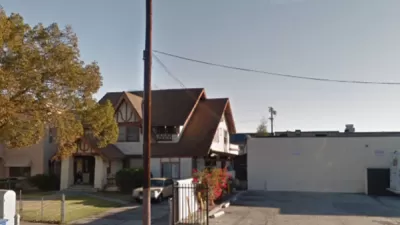NIMBYism in one of the country’s fastest-growing cities contributes to a severe housing shortage and soaring housing costs.

A Texas Monthly piece by Megan Kimble explains the uphill battle faced by housing advocates in Austin, where rents rose by 40 percent between March 2020 and June of this year and families struggle to find affordable housing.
“Since the pandemic began, home prices have increased faster in the capital than almost anywhere else in the country.” Yet the city’s development code, which dictates where different types of housing can be built, was last updated in 1984, meaning the city still guides development based on a time when the population was half as large. Today, building housing is a case-by-case, neighborhood by neighborhood process that leads to drawn-out fights and a prolonged housing shortage.
Kimble argues that the NIMBYism exhibited by many Texas communities has prevented many housing developments from going forward, exacerbating the state’s persistent housing shortage. The article details some specific cases and goes on to explain how zoning can prevent small, vocal groups from gaining outsized influence and blocking beneficial affordable housing projects.
FULL STORY: Why Bringing More Affordable Housing to Austin Is a Block-by-Block Battle

Trump Administration Could Effectively End Housing Voucher Program
Federal officials are eyeing major cuts to the Section 8 program that helps millions of low-income households pay rent.

Planetizen Federal Action Tracker
A weekly monitor of how Trump’s orders and actions are impacting planners and planning in America.

Ken Jennings Launches Transit Web Series
The Jeopardy champ wants you to ride public transit.

Rebuilding Smarter: How LA County Is Guiding Fire-Ravaged Communities Toward Resilience
Los Angeles County is leading a coordinated effort to help fire-impacted communities rebuild with resilience by providing recovery resources, promoting fire-wise design, and aligning reconstruction with broader sustainability and climate goals.

When Borders Blur: Regional Collaboration in Action
As regional challenges outgrow city boundaries, “When Borders Blur” explores how cross-jurisdictional collaboration can drive smarter, more resilient urban planning, sharing real-world lessons from thriving partnerships across North America.

Philadelphia Is Expanding its Network of Roundabouts
Roundabouts are widely shown to decrease traffic speed, reduce congestion, and improve efficiency.
Urban Design for Planners 1: Software Tools
This six-course series explores essential urban design concepts using open source software and equips planners with the tools they need to participate fully in the urban design process.
Planning for Universal Design
Learn the tools for implementing Universal Design in planning regulations.
Ada County Highway District
Clanton & Associates, Inc.
Jessamine County Fiscal Court
Institute for Housing and Urban Development Studies (IHS)
City of Grandview
Harvard GSD Executive Education
Toledo-Lucas County Plan Commissions
Salt Lake City
NYU Wagner Graduate School of Public Service





























